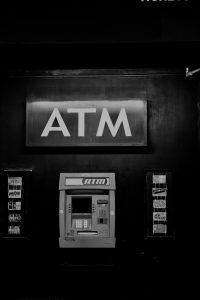Inside Bar Forex Trading: Understanding Market Trends and Patterns
The foreign exchange market, also known as forex, is the largest and most liquid financial market in the world. With trillions of dollars traded daily, it offers numerous opportunities for traders to profit. However, navigating the forex market can be challenging, especially for beginners. One effective strategy that traders use to identify potential market trends and patterns is the inside bar trading method.
What is an Inside Bar?
An inside bar is a price pattern that occurs when the high and low of a candlestick is contained within the high and low of the previous candlestick. In simple terms, an inside bar forms when the current candlestick is smaller than the previous one. This pattern represents a period of consolidation or indecision in the market.
Inside bars can appear on any time frame, from minutes to monthly charts, depending on the trader’s trading style and preferences. However, they are most commonly used on daily and weekly charts to identify potential trend reversals or continuation patterns.
Understanding Market Trends
Before delving into how inside bars can help identify market trends, it’s crucial to understand the concept of trends. In forex trading, a trend refers to the general direction in which prices are moving over a given period. Trends can be classified into three main categories: uptrend, downtrend, and sideways trend.
An uptrend occurs when prices consistently make higher highs and higher lows. This indicates a bullish market sentiment, with buyers dominating the market. Conversely, a downtrend occurs when prices consistently make lower lows and lower highs, indicating a bearish market sentiment with sellers in control. Finally, a sideways trend, also known as a range-bound market, occurs when prices move within a specific range with no clear direction.
Identifying Trend Reversals with Inside Bars
Inside bars can be powerful indicators of potential trend reversals. When an inside bar forms after a prolonged uptrend or downtrend, it suggests a period of consolidation and indecision in the market. Traders interpret this as a potential reversal signal.
For example, if an inside bar forms after a significant uptrend, it indicates that buyers are losing momentum, and sellers might be stepping in. Conversely, if an inside bar forms after a significant downtrend, it suggests that sellers are losing momentum, and buyers might be entering the market. Traders can take advantage of these signals by entering trades in the direction of the potential trend reversal.
Continuation Patterns with Inside Bars
In addition to identifying trend reversals, inside bars can also signal continuation patterns. A continuation pattern suggests that the prevailing trend is likely to continue after a period of consolidation.
When an inside bar forms within an ongoing uptrend or downtrend, it indicates a temporary pause or consolidation before the trend resumes. Traders interpret this pattern as a potential continuation signal, indicating that the trend is likely to continue in the same direction.
For example, if an inside bar forms within an uptrend, it suggests that buyers are taking a breather before pushing prices higher. Traders can use this signal to enter or add to their positions, anticipating the continuation of the uptrend.
Trading Strategies with Inside Bars
There are several popular trading strategies that traders use with inside bars. One common approach is to wait for a breakout of the inside bar’s high or low before entering a trade. For a bullish trade, traders would enter when the price breaks above the inside bar’s high, while for a bearish trade, they would enter when the price breaks below the inside bar’s low. This strategy aims to capture the momentum generated by the breakout.
Another approach is to use inside bars as entry triggers in conjunction with other technical indicators or chart patterns. For example, traders might wait for an inside bar to form near a key support or resistance level before entering a trade. This strategy combines the power of inside bars with other technical analysis tools to increase the probability of successful trades.
Conclusion
Understanding market trends and patterns is essential for successful forex trading. The inside bar trading method provides traders with a valuable tool to identify potential trend reversals and continuation patterns. By incorporating inside bars into their trading strategies, traders can increase their chances of profiting from the dynamic forex market. However, it’s important to remember that no strategy is foolproof, and risk management is crucial in forex trading.






